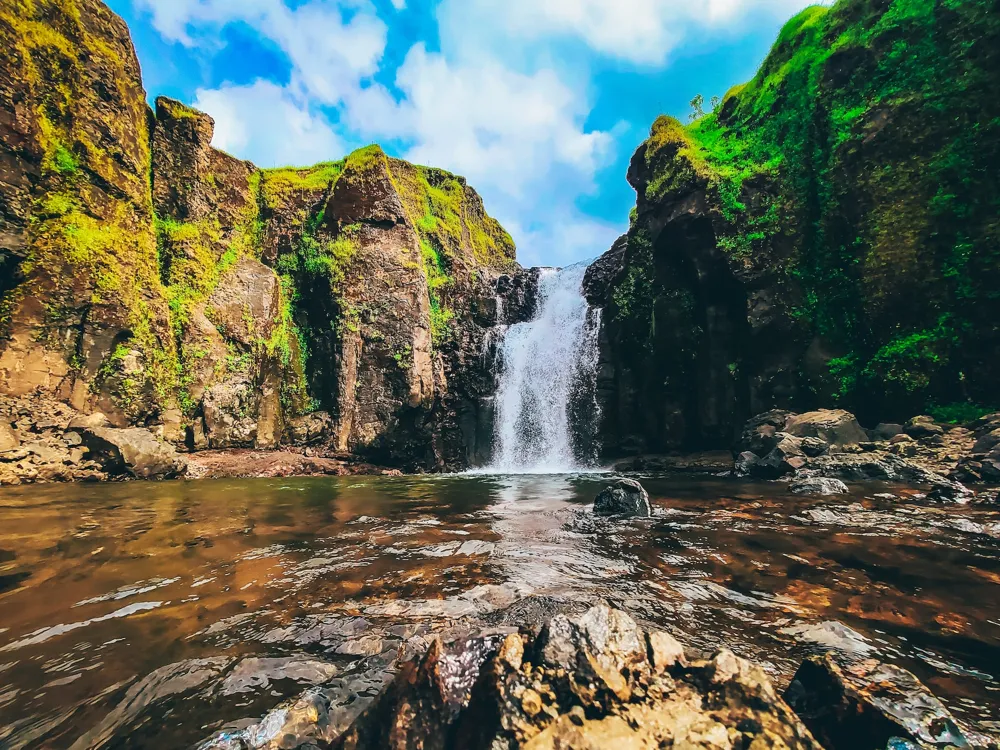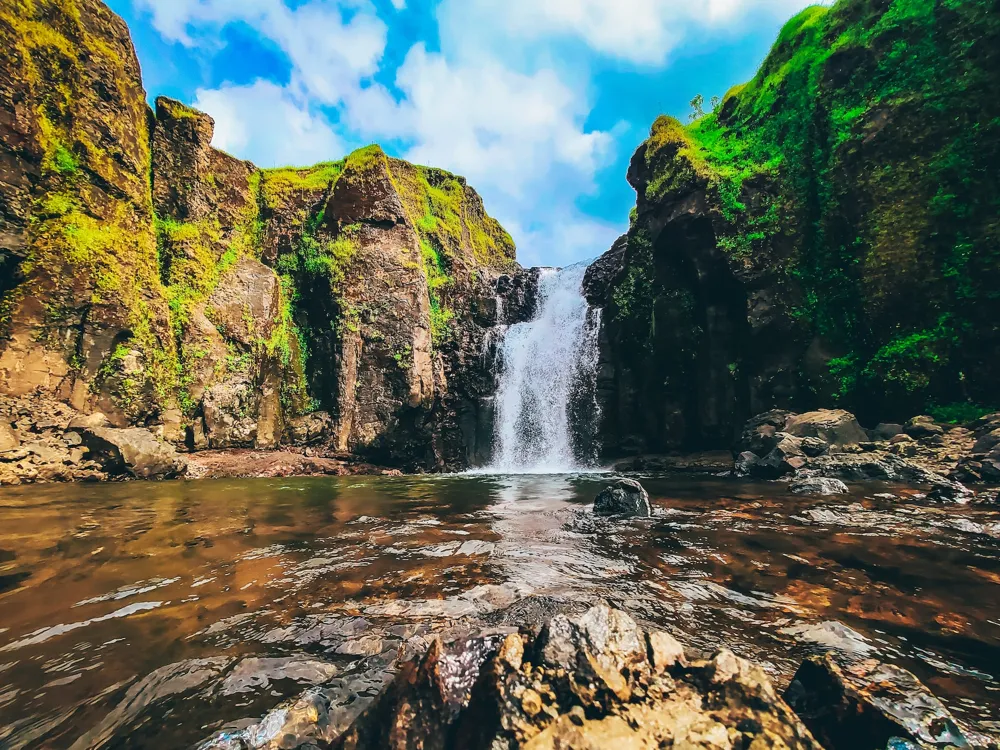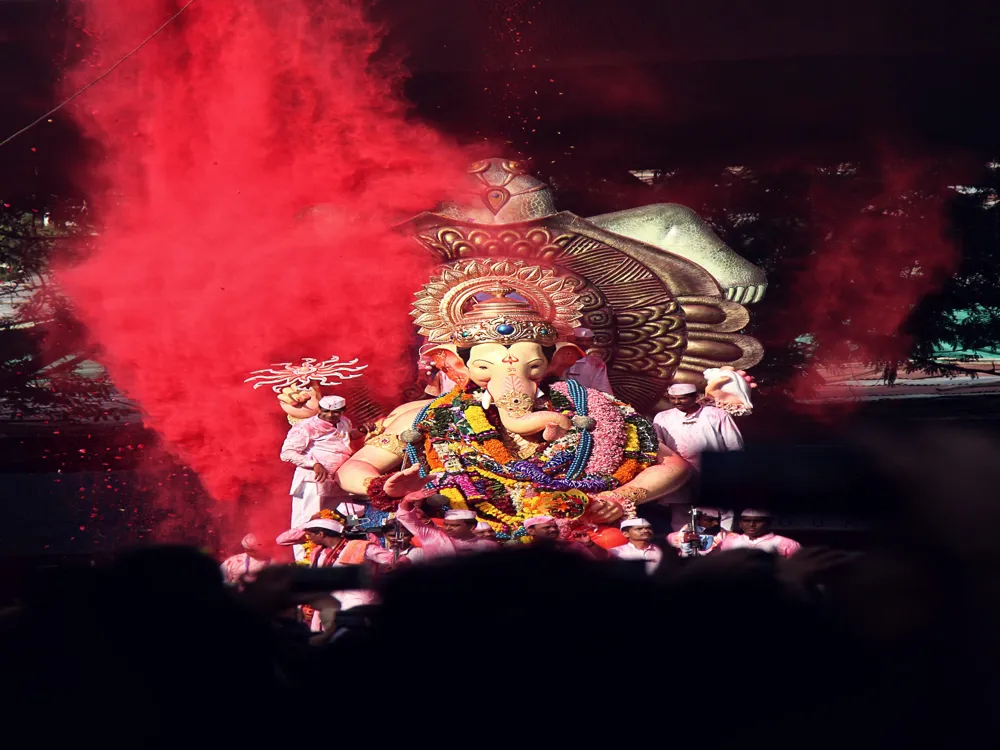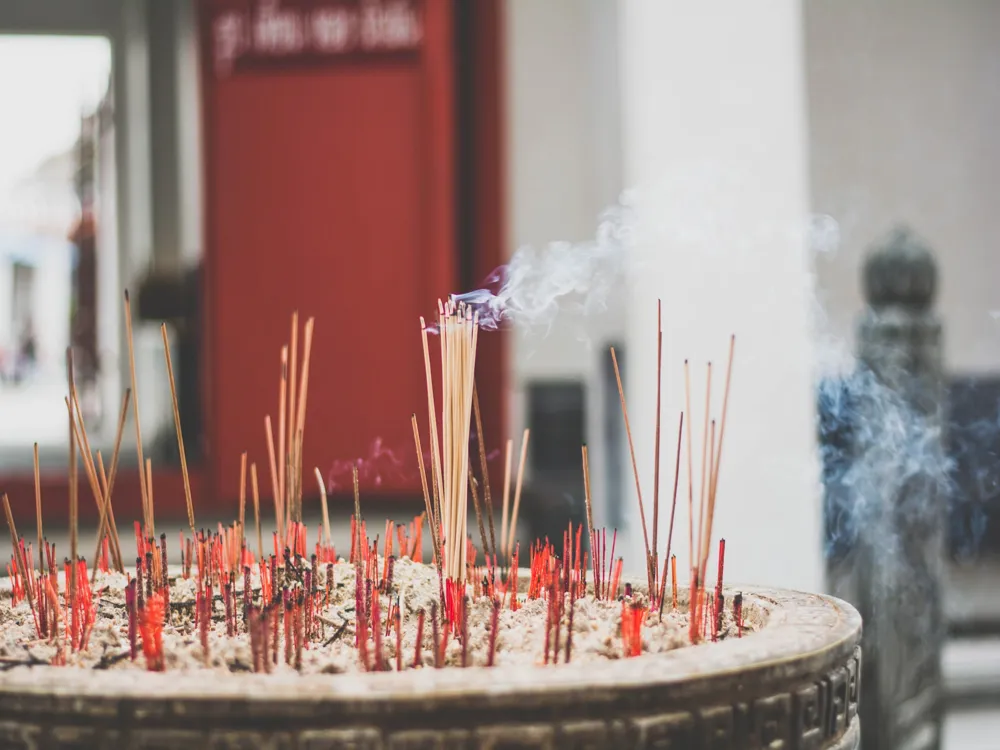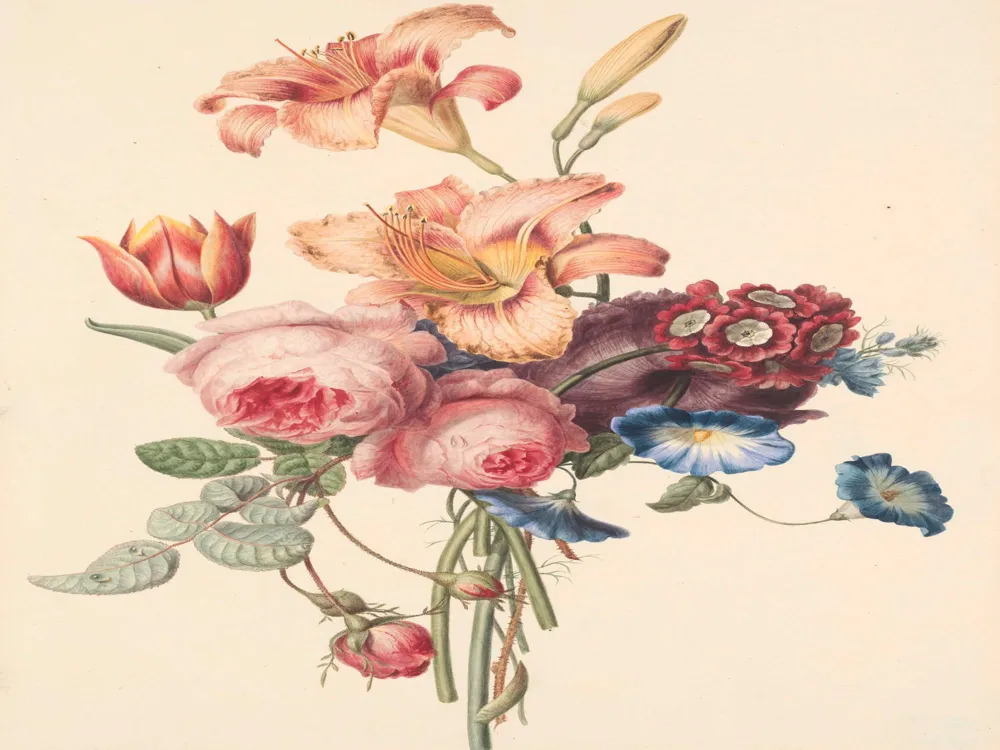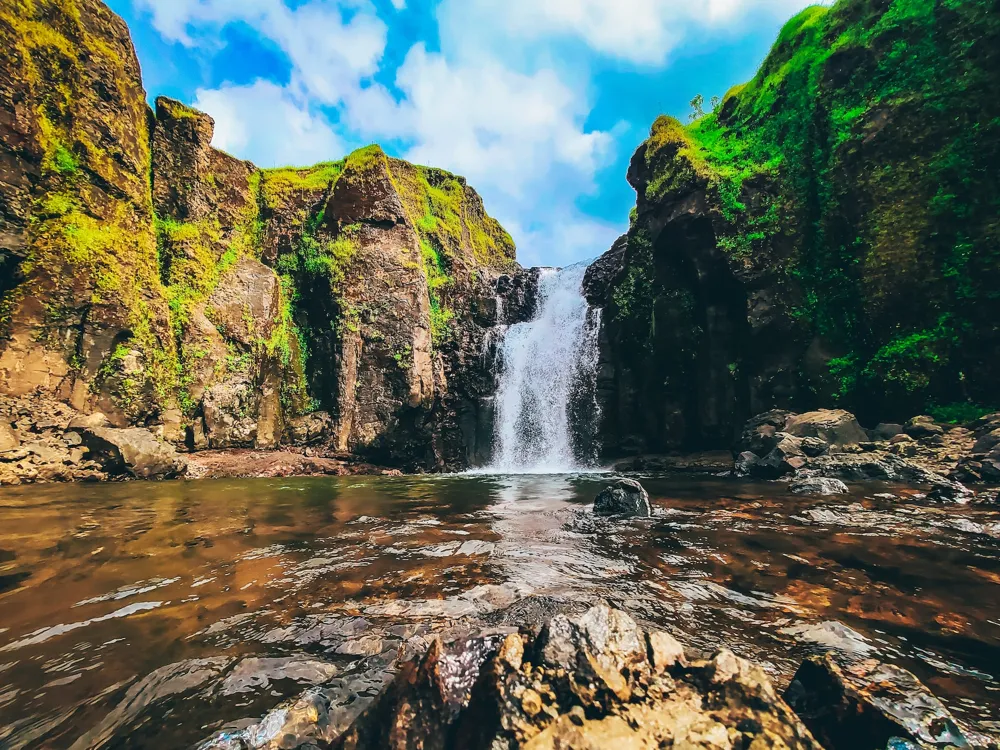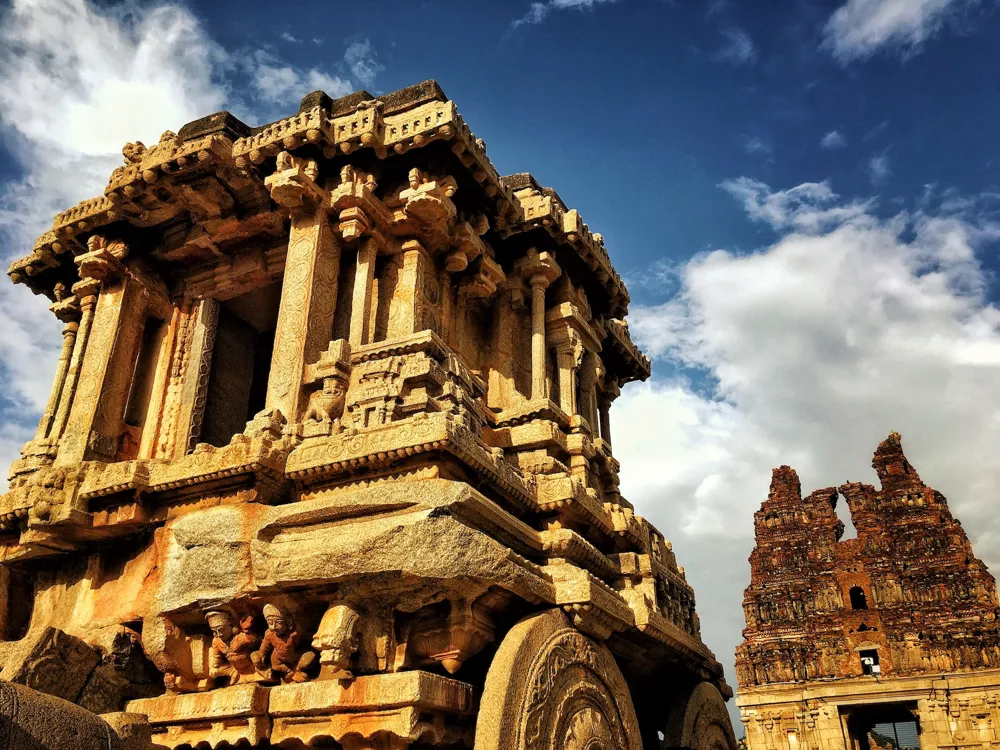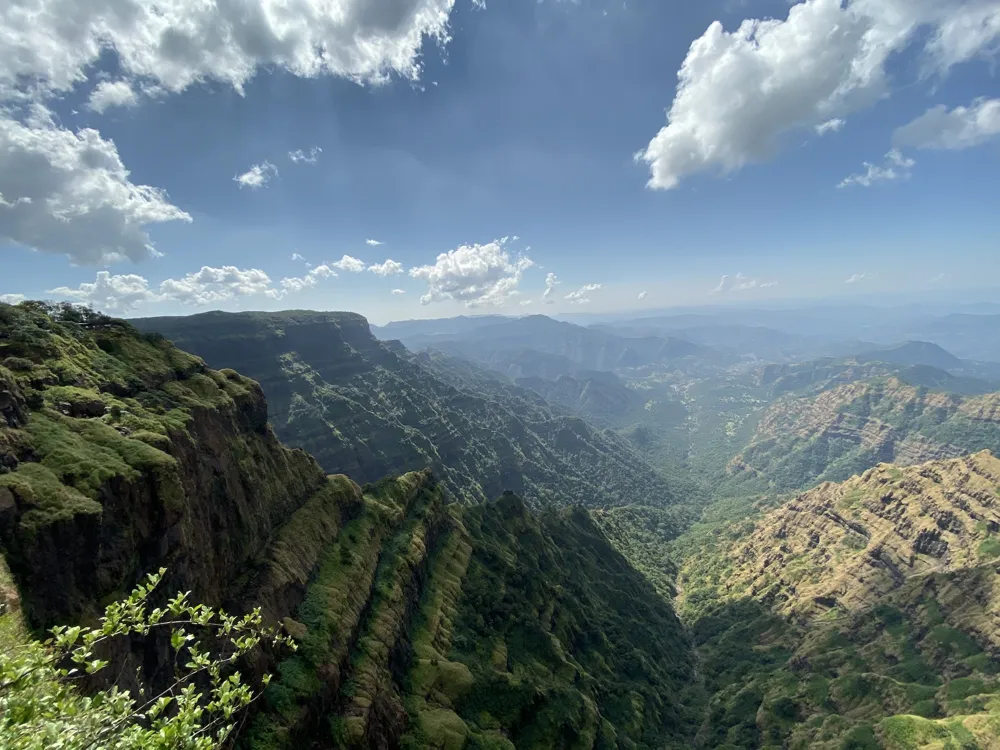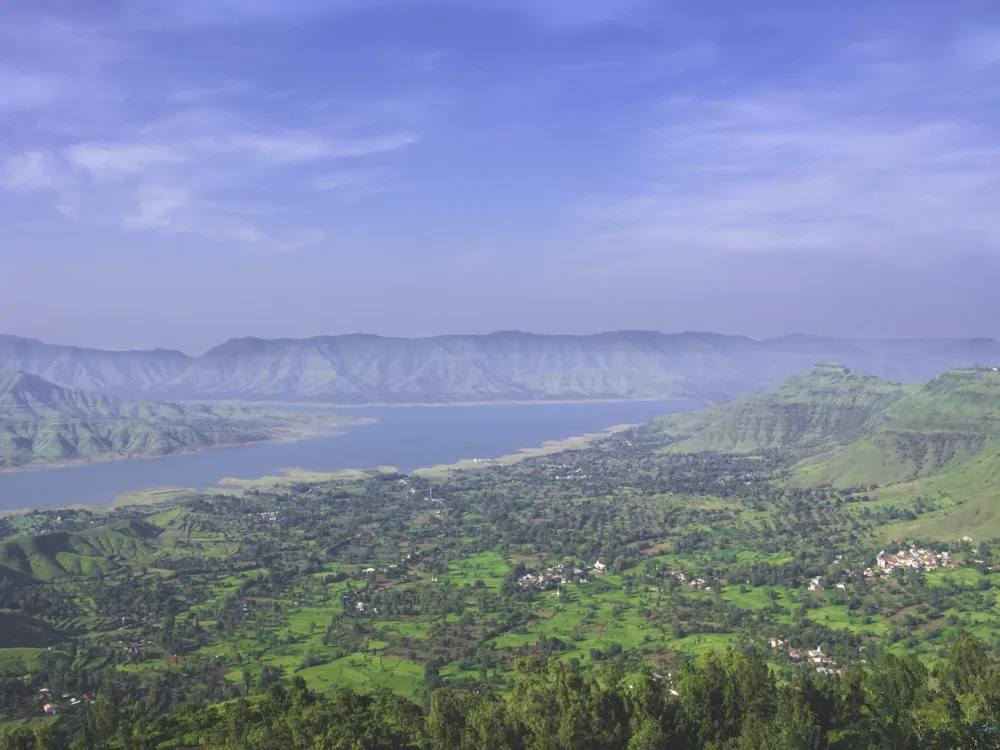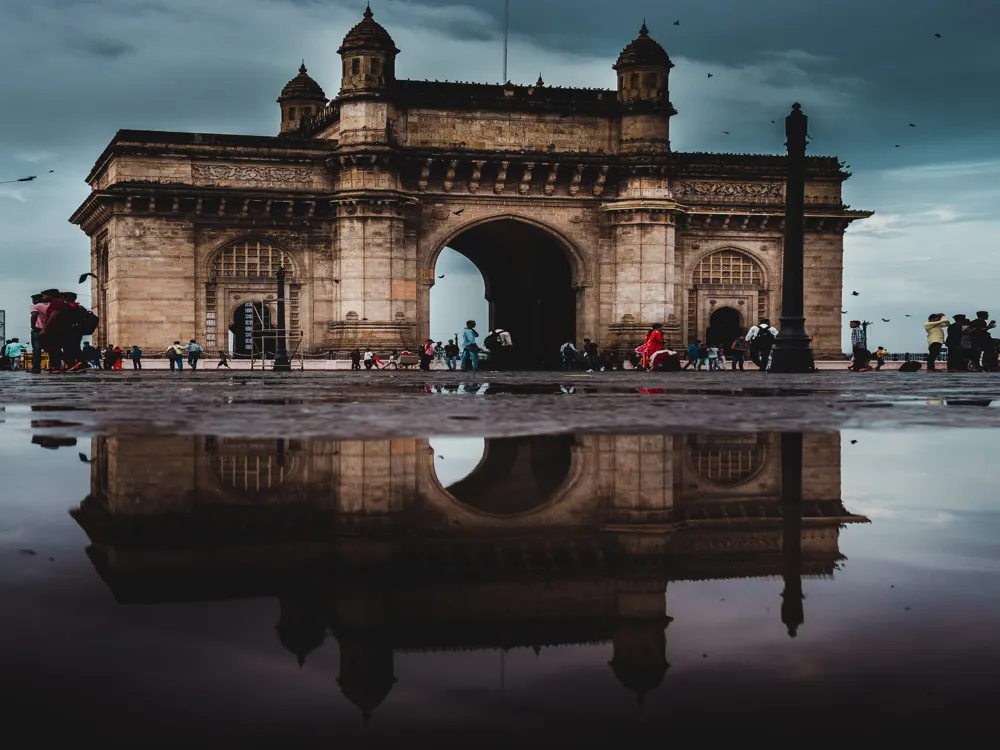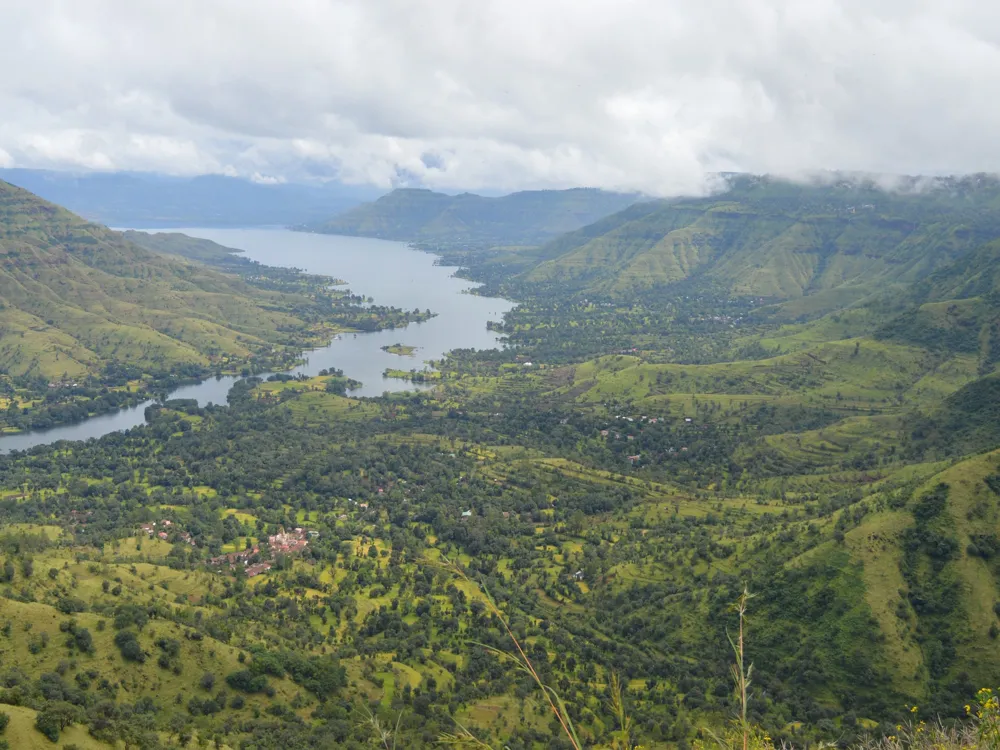The Kopeshwar Temple, a remarkable testament to ancient Indian architecture, stands majestically in the small village of Khidrapur in Kolhapur district, Maharashtra. This temple, dedicated to Lord Shiva, is not only a place of spiritual significance but also a beacon of historical and architectural brilliance. Dating back to the 12th century, it was built during the reign of the Shilahara dynasty. The temple's location near the Krishna River adds to its serene and picturesque setting, making it a perfect blend of spiritual and natural beauty. One of the most striking features of Kopeshwar Temple is its intricate carvings and detailed sculptures. The temple's architecture showcases a mix of both the Jain and the Hindu styles, indicating the harmonious coexistence of different religious beliefs during that period. The temple consists of four main sections - the Swargamandapam (outer hall), Sabhamandapam (assembly hall), Antaral Kaksha (intermediate chamber), and the Garbhagriha (sanctum sanctorum). Each section tells a unique story through its architectural elements and carvings. The Swargamandapam is an open hall featuring a circular ceiling that is a testament to the astronomical knowledge of the ancient architects. The Sabhamandapam is adorned with pillars, each uniquely designed with intricate carvings depicting various deities, mythological figures, and scenes from epics like the Mahabharata and Ramayana. The Antaral Kaksha serves as a transitional space leading to the Garbhagriha, which houses the sacred Shivalinga. The walls of the temple are adorned with panels depicting various aspects of life, including social, cultural, and religious themes. The temple's design integrates elements of nature, with the outer walls featuring carvings of animals, birds, and flowers, symbolizing the connection between the divine and the natural world. The play of light and shadow through the strategically placed openings creates a mystical atmosphere within the temple, especially during sunrise and sunset. Remarkably, the Kopeshwar Temple has withstood the test of time, surviving natural disasters and human conflicts. Its resilience is a testament to the advanced engineering and architectural skills of ancient Indian craftsmen. Today, the temple not only serves as a place of worship but also as a prominent historical site, attracting historians, architects, and tourists from all over the world. The architecture of the Kopeshwar Temple is a splendid example of the artistry and engineering of the 12th century. The temple, built from intricately carved black basalt stone, stands as a testament to the craftsmanship of the Shilahara period. Its design follows the Hemadpanthi style of architecture, characterized by the use of locally available black stone and lime, without the use of mortar. This unique construction technique not only provided stability but also allowed for the intricate carvings that adorn every surface of the temple. The temple's layout is designed in the form of a mandala, a spiritual and ritual symbol representing the universe. The Swargamandapam, or outer hall, features a circular, open-to-sky ceiling, symbolizing the connection between the earthly realm and the cosmos. The ceiling is supported by a set of beautifully carved pillars, each depicting various deities and celestial beings. Moving inward, the Sabhamandapam is the assembly hall where devotees gather. This hall is supported by 48 carved pillars, each unique in its design and symbolism. The carvings on these pillars depict scenes from Hindu epics, celestial dancers, and musicians, creating a vivid tapestry of ancient Indian culture and mythology. The Antaral Kaksha acts as a vestibule between the outer halls and the inner sanctum, the Garbhagriha. This space is designed to prepare devotees for the spiritual experience of the sanctum. The Garbhagriha, housing the sacred Shivalinga, is a sanctified space where the divine presence is most intensely felt. The stone linga is set in a yoni base, symbolizing the union of Shiva and Shakti, the cosmic principles of creation and destruction. The temple's exterior is equally magnificent, with walls featuring a series of niches housing deities, apsaras (celestial nymphs), and other mythological figures. The temple's overall structure symbolizes a cosmic diagram, reflecting the ancient Indian belief in the interconnectedness of the cosmos, the earthly realm, and the divine. The Kopeshwar Temple is not just a religious site but a living museum of art, culture, and history. Its architecture tells the story of a bygone era and continues to inspire awe and reverence in all who visit. Visitors should dress modestly, covering shoulders and knees, as a sign of respect for the temple's cultural and religious significance. While photography may be allowed in certain areas, it's important to check for any restrictions, especially in the sanctum sanctorum. Consider taking a guided tour to gain deeper insights into the temple's history, architecture, and religious practices. Be mindful of local customs and practices. Engage with the locals respectfully and seek permission before photographing them. The best time to visit is during the cooler months, from November to February, to avoid the harsh summer heat. Visiting during local festivals can be a unique experience, but be prepared for larger crowds and a more bustling atmosphere. Kopeshwar Temple, situated in Khidrapur, is accessible by various means of transportation. The nearest city is Kolhapur, which is well-connected by road and rail. Visitors can take a bus or hire a taxi from Kolhapur to reach the temple. The journey offers scenic views of the countryside and takes about an hour. For those traveling by air, the nearest airport is in Pune, from where one can hire a taxi or take a bus to Kolhapur and then proceed to Khidrapur. It's advisable to check local travel advisories and road conditions before planning the trip. Read More:Overview of Kopeshwar Temple, Kolhapur
Architecture of Kopeshwar Temple
Tips When Visiting Kopeshwar Temple
Dress Appropriately
Photography Rules
Guided Tours
Local Etiquette
Best Time to Visit
Festivals and Ceremonies
How To Reach Kopeshwar Temple
Kopeshwar Temple
Kolhapur
Maharashtra Goa
NaN onwards
View kolhapur Packages
Kolhapur Travel Packages
View All Packages For Kolhapur
Top Hotel Collections for Kolhapur

Private Pool

Luxury Hotels

5-Star Hotels

Pet Friendly
Top Hotels Near Kolhapur
Other Top Ranking Places In Kolhapur
View All Places To Visit In kolhapur
View kolhapur Packages
Kolhapur Travel Packages
View All Packages For Kolhapur
Top Hotel Collections for Kolhapur

Private Pool

Luxury Hotels

5-Star Hotels

Pet Friendly







